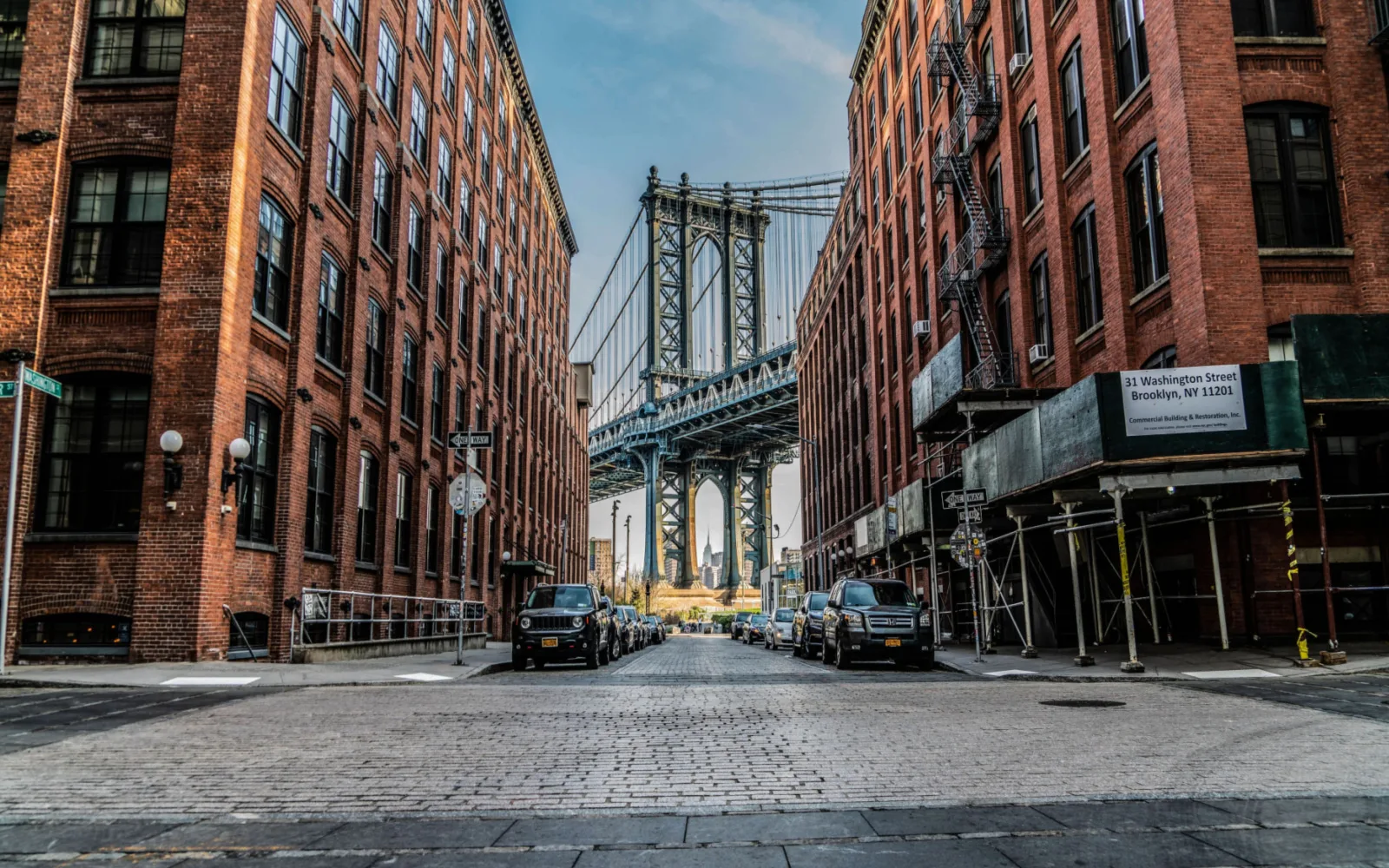Is Brooklyn safe to visit?
Brooklyn is mostly safe for tourists, especially if you stick to its well-known, bustling areas. This insight challenges the prevalent misconception that New York City, despite its size, suffers from high crime rates. In reality, NYC is often lauded as the “Safest Big City in America,” a title that extends to Brooklyn, thanks to its lower crime rate compared to other large cities.
The New York City borough of Brooklyn is one of the most popular destinations in the city now, providing surprising competition to Manhattan. This area is popular among younger visitors that want to experience the cutting edge of New York’s hipster culture, which is centered on Brooklyn.
The borough also has plenty of shopping malls, entertainment complexes, and even the Brooklyn Nets stadium. Visitors can also head to the Brooklyn Bridge for some of the best views of Manhattan.
Although Brooklyn is becoming a hotbed of youth culture and tourism, some parts of the borough are still gritty. But is it safe to visit in 2024? We’ll share this and more below.
Is Brooklyn Safe to Visit?
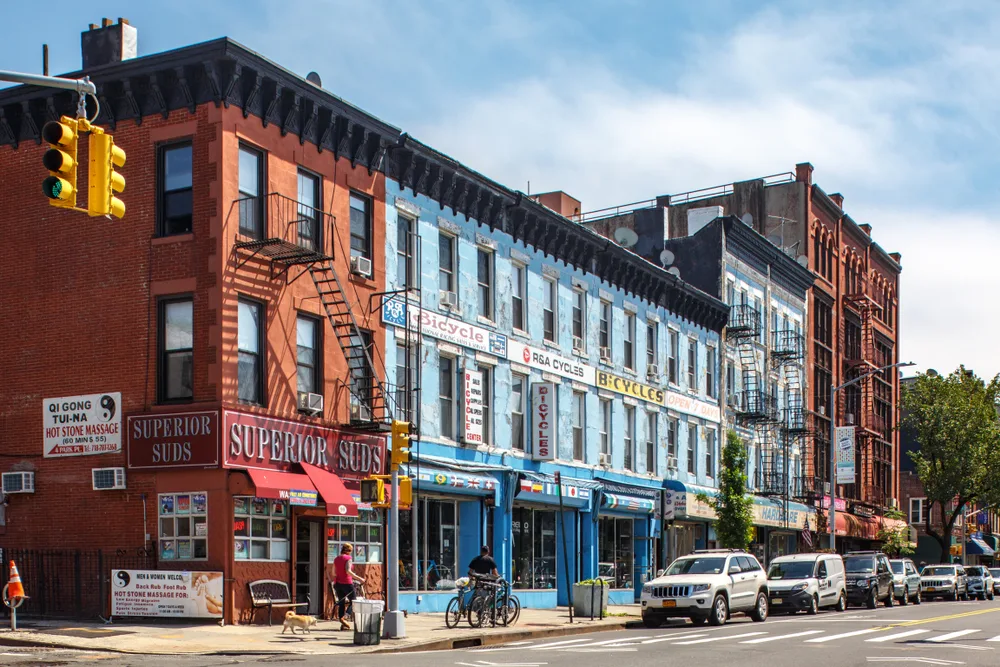
New York, New York / USA – 01 06 2018: Brooklyn neighbourhood, Brownstones near prospect park and Park Slope./Solepsizm/Shutterstock
Yes. Brooklyn is safe to visit as long as you know which neighborhoods to visit, and which neighborhoods to avoid. The borough is deeply divided by neighborhood and sticking to popular touristy areas is important to help you stay safe.
New York City has a bit of a negative reputation because people assume that since it’s such a large place, it must also have the highest crime rate in the United States.
However, New York City is actually nicknamed the Safest Big City in America since its crime rate is lower than that of other metropolises, such as St. Louis. Brooklyn as one of New York City’s residential boroughs is surprisingly safe to many people whose main knowledge of the borough may come from stereotypes.
In fact, Brooklyn is getting safer over the past few years, according to writing by top law enforcement officials in the area. Like most American urban areas, Brooklyn does experience crime.
Criminal incidents range from petty to violent, such as:
- Theft
- Scams
- Fraud
- Burglary
- Mugging
- Armed robbery
- Assault
One thing to keep in mind is that although Brooklyn is just one out of five boroughs in New York City, it is massive. It has a population of 2.6 million people and is the second-biggest and second-most densely populated county in all of New York State.
When you have this many people on top of each other, bad things can happen, but also the probability of a negative incident affecting you in particular is fairly low. Since Brooklyn is so big, that also means that it’s difficult to define safety in Brooklyn as a whole.
Certain parts of the borough are very wealthy, and are even home to popular celebrities, while others are home to housing projects that are de facto ghettos full of impoverished people (these deep income divides are part of the reason why Brooklyn struggles with crime).
It’s far more useful to research the neighborhoods you are planning to visit during your trip to Brooklyn rather than look at information for the borough in general, which may be too general to help.
Like the rest of New York City, Brooklyn doesn’t get hit much by natural disasters. However, it is occasionally the victim of strong storms, especially the southern coast.
Superstorm Sandy in 2013 devastated many parts of Brooklyn such as Breezy Point, but such events are rare. As when visiting anywhere, make sure you check ahead for the weather forecast when visiting Brooklyn.
Crime in Brooklyn
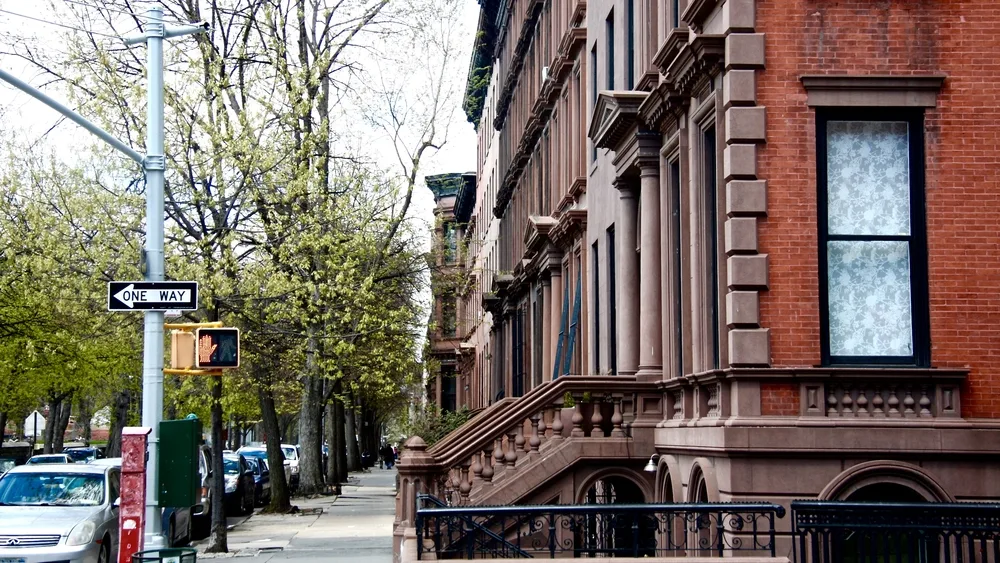
Sneaky Buddy/Shutterstock
Crime statistics show that Brooklyn has a moderately high crime rate that varies considerably based on where you are in the borough.
Although violent crime does happen throughout Brooklyn, statistically it is unlikely to affect tourists. The NYPD doesn’t collect data for all of Brooklyn but divides the borough into Brooklyn North and Brooklyn South.
According to data for Brooklyn South, 2023 saw 15,644 total violent crimes committed in the area. The most common violent crime is grand larceny, which makes up 41% of total violent crimes committed. The next most common violent crime is felony assault, which makes up 22.5% of total violent crimes.
Still, the most common crime in Brooklyn South is regular theft. According to data from a sample week in January 2024, theft made up nearly 50% of total crimes committed in Brooklyn South, more than the total number of violent crimes combined.
Brooklyn North is the part of Brooklyn with a higher crime rate, with 16,711 total violent crimes committed in 2023.
It has similar crime patterns to Brooklyn South. The most common violent crime is still grand larceny, which makes up about 34% of violent crimes committed in the area.
The most common overall crime is theft, which makes up about 36% of total crimes committed in a sample week. However, violent crime makes up a higher percentage of overall crime in Brooklyn North, about 40%.
The second-most common type of crime is misdemeanor assault, which makes up about 18% of the total crimes committed per week.
Theft
No matter where you are in Brooklyn, theft is usually the most common crime, so it’s important to be informed about it. Theft is also the crime that targets tourists the most. Some popular forms of theft, such as shoplifting or residential burglaries, are highly unlikely to affect tourists.
Tourists are sometimes targeted for pickpocketing, bag snatching, and scams. Be especially careful around popular Brooklyn tourist attractions such as the Brooklyn Bridge, DUMBO, and Coney Island, and on public transportation.
Theft isn’t so widespread in Brooklyn that basic precautions aren’t enough to deter it. Just make sure that you don’t do something silly such as leaving your purse on the shore in Coney Island while you go for a swim or putting your phone on the railing of the Brooklyn Bridge to go take a timer.
Hold on to your wallet, say no to people approaching you with offers as they are scammers, and you should avoid theft.
Assault
Brooklyn has its fair share of violent crimes, and assault is one of the most common. Local news stories are full of stories about assault and brawls happening throughout the borough. As weapons continue to be illegally trafficked throughout Brooklyn, some assaults can turn deadly.
Most assault cases in Brooklyn, as elsewhere, happen as disputes between people who know each other escalate. As a visitor, you are not likely to get involved in those. Although random assaults have happened before, they are very rare.
Try to stay out of disputes. For example, if you notice someone at a bar or club becoming belligerent, leave the situation instead of letting it escalate. There have been cases where people were assaulted after a robbery.
Robberies are becoming less common in Brooklyn, but still happen at night in some unsavory areas. Avoid walking in unfamiliar areas after dark. If someone does rob you, hand over your valuables and focus on your personal safety.
Avoiding Bad Areas
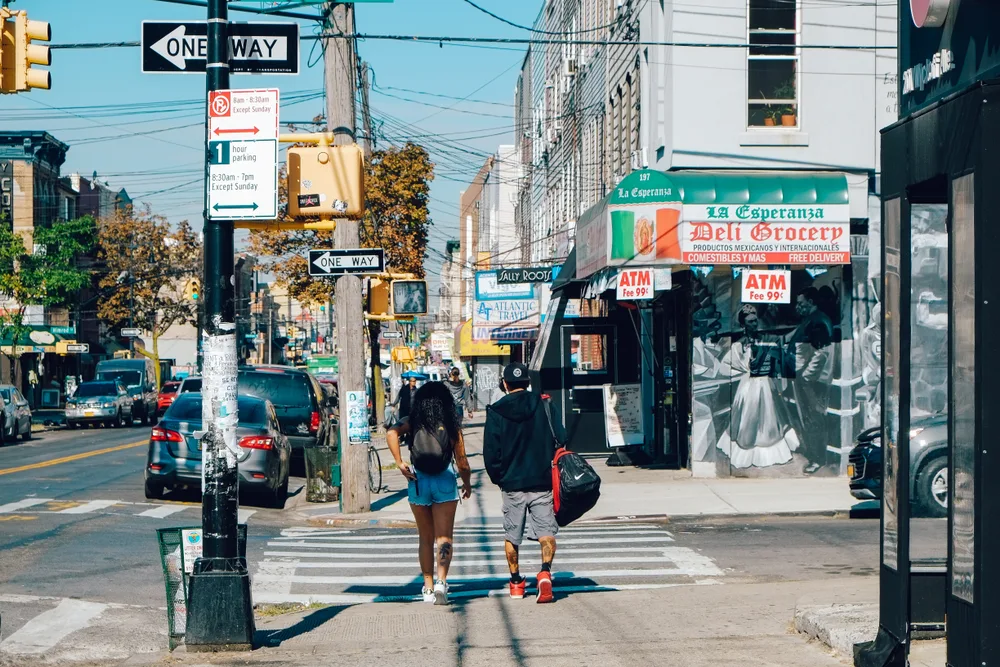
NEW YORK – OCTOBER 4: A Bushwick street on October 4th, 2017 in Bushwick Brooklyn. Bushwick’s major commercial streets are Knickerbocker Avenue, Myrtle Avenue, Wyckoff Avenue, and Broadway/Alessio Catelli/Shutterstock
Crime in Brooklyn differs drastically based on neighborhood, so knowing where to avoid is one of the most important tasks to keep yourself safe. As a rule, most popular touristy neighborhoods or hipster areas, from Williamsburg to Park Slope to DUMBO, are safe.
Southern Brooklyn is generally residential and quiet as well. Neighborhoods to avoid include:
- East New York
- Canarsie
- Brownsville
- Bedford-Stuyvesant
The NYPD has a crime map that can help you figure out which neighborhoods are safe to visit.
Things to Consider
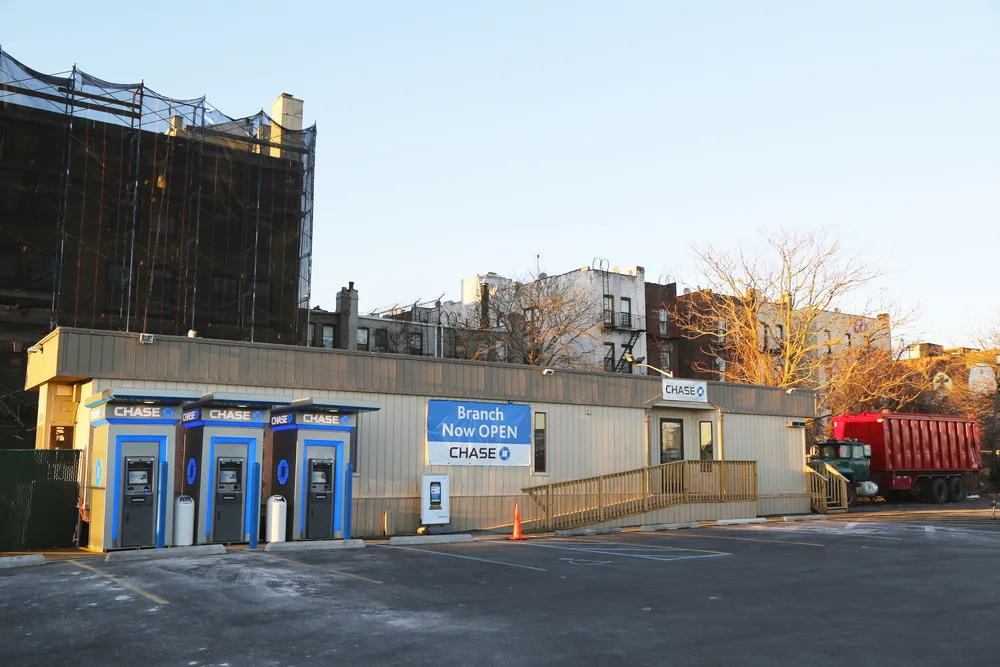
Leonard Zhukovsky/Shutterstock
Here are a few additional tips that can help you visit Brooklyn safely:
- Try to blend in with the locals. Walk with a purpose and discreetly take photos. Not only will this prevent you from being singled out as a crime target, but it will also stop you from annoying famously prickly New Yorkers.
- Avoid stereotypes about Brooklyn. People here are fiercely proud of their home, and they don’t appreciate tourists coming in and gawking at the neighborhood they think is very unsafe. Plus, most are quick to point out that Brooklyn is safer than many other US cities.
- Avoid scams. Don’t play shell games or card games on the street as those are common scam set-ups. Beware anyone that seems too eager to approach you or get your attention.
Frequently Asked Questions
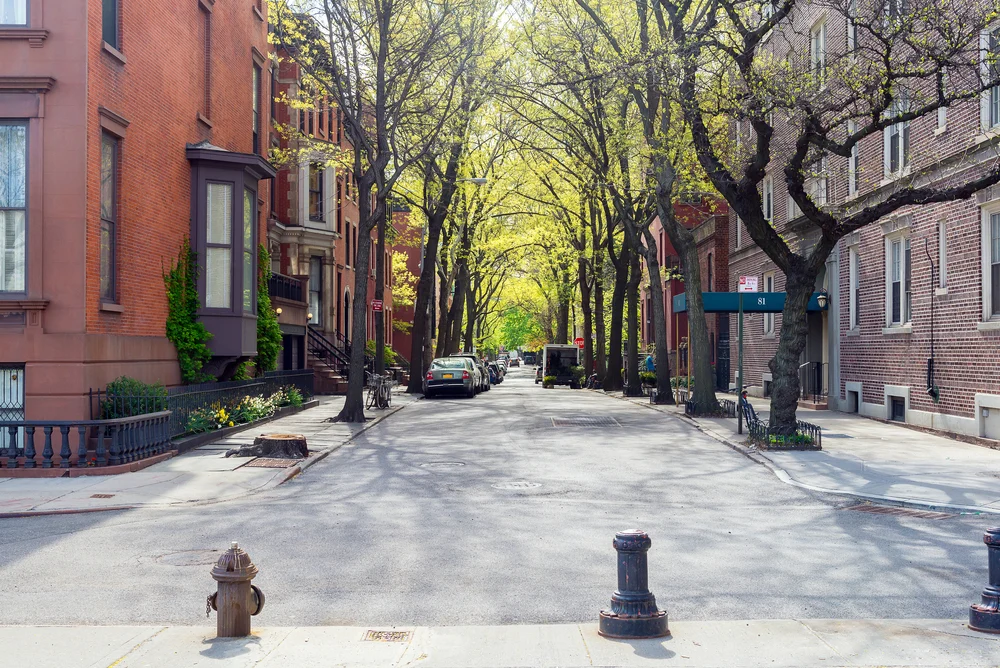
Kusska/Shutterstock
These common questions people have asked about safety in Brooklyn can help with your peace of mind:
Is it safe to walk in Brooklyn at night?
The answer depends on where you go. Popular tourist areas and brightly lit streets are somewhat safe at night, while neighborhoods with high crime rates and dark alleyways are not.
Is Manhattan safer than Brooklyn?
Tourists are equally safe in Manhattan and Brooklyn. Per population, the crime rate is the same, both have dangerous and safe neighborhoods, and Manhattan actually has a higher pickpocketing rate.
Where should you not stay in Brooklyn?
Avoid staying in dangerous parts of Brooklyn such as Downtown Brooklyn or East New York. Look up neighborhood crime information before booking a stay.
Is Queens or Brooklyn safer?
Queens is somewhat safer than Brooklyn because it has a lower crime rate, and this largely residential borough is fairly safe.
What is the safest part of Brooklyn?
Brooklyn’s wealthier neighborhoods also tend to be the safest, such as Park Slope and Brooklyn Heights.
So, Is Brooklyn Safe to Visit?
Brooklyn is safe to visit if you use common sense. Avoid bad neighborhoods, don’t stand out as a tourist, and don’t leave your wallet unattended, and you’ll have a safe time in Brooklyn.



